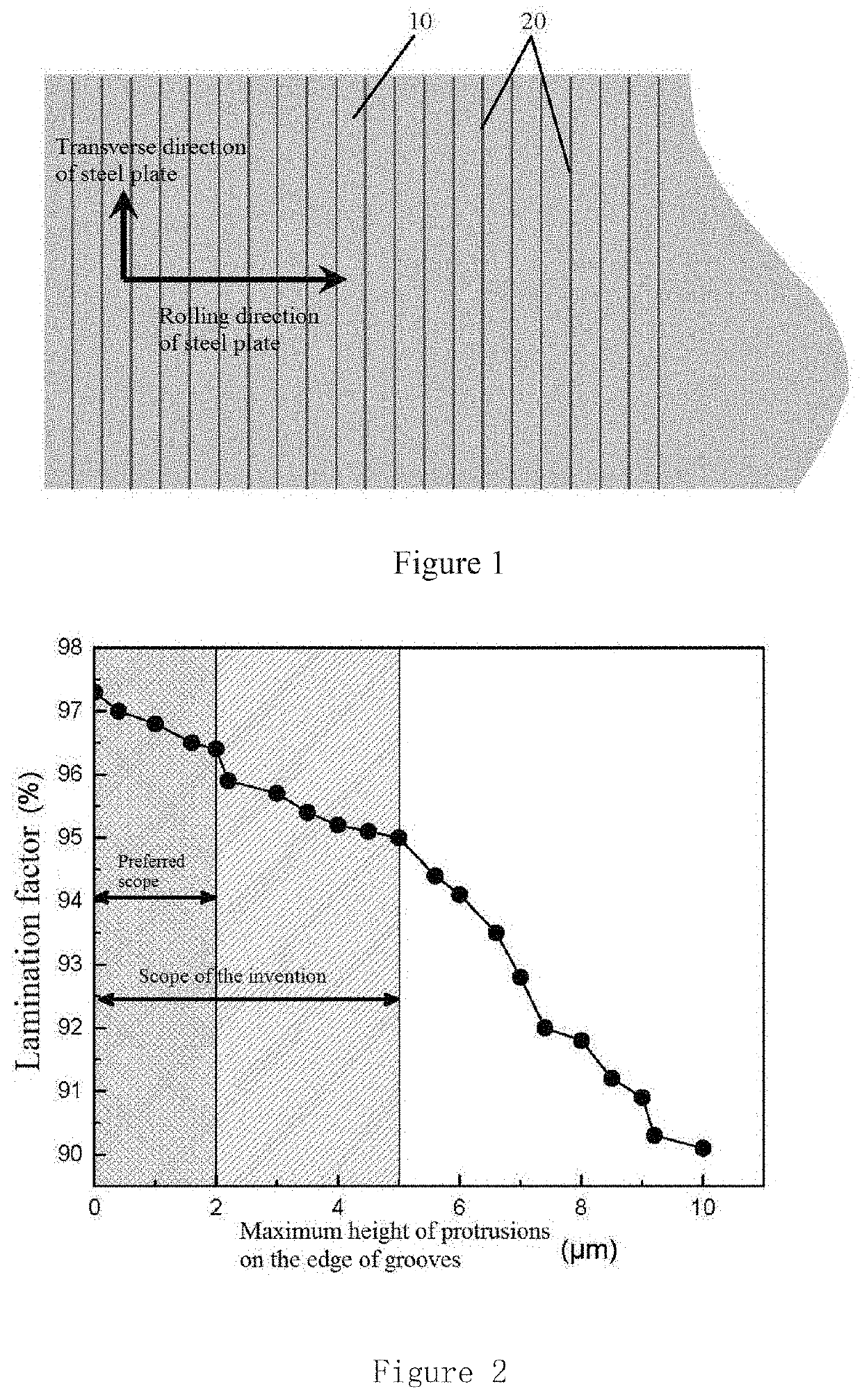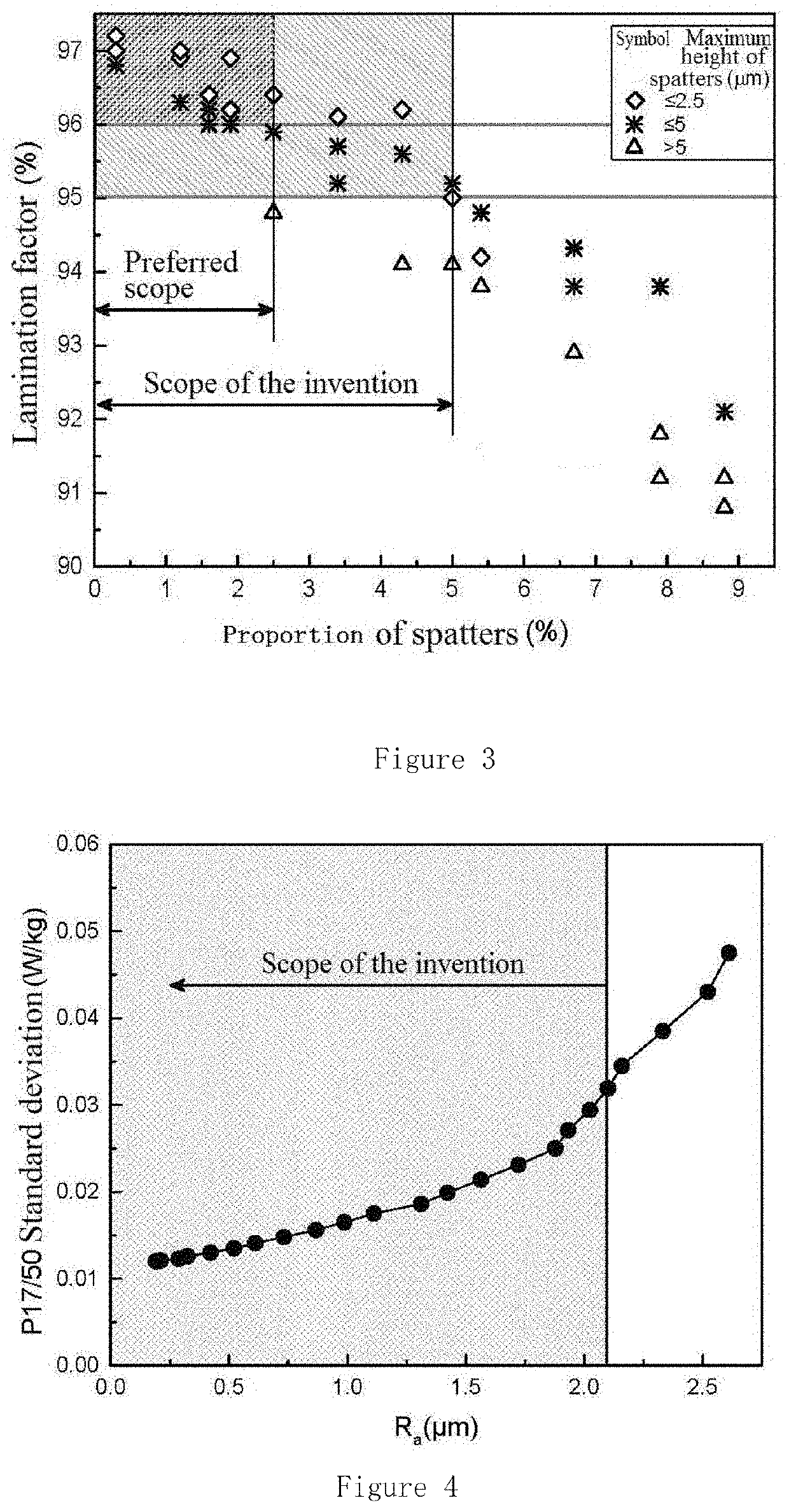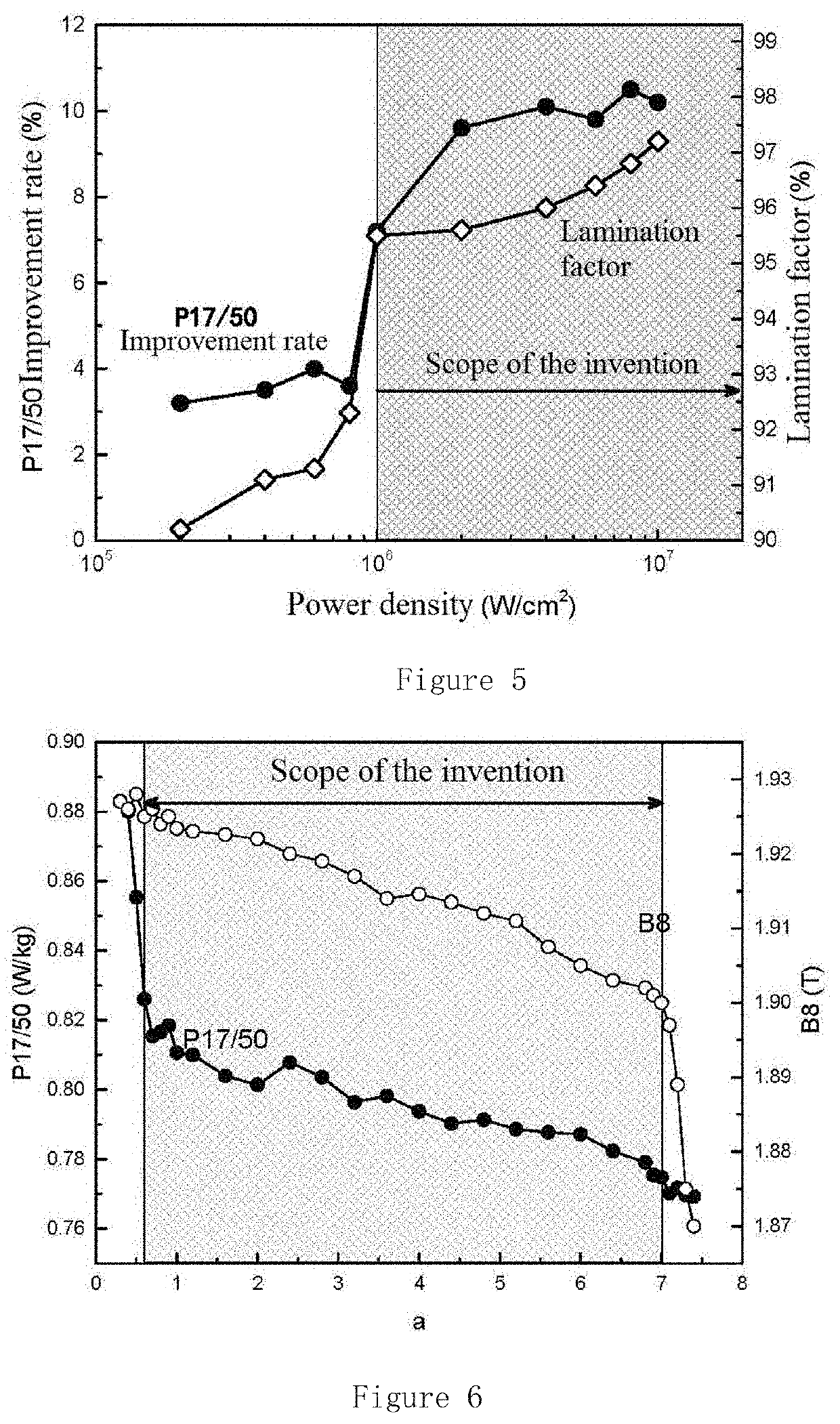Laser-scribed grain-oriented silicon steel resistant to stress-relief annealing and manufacturing method therefor
a grain-oriented silicon and stress-relief technology, applied in the field of grain-oriented silicon steel, can solve the problems of etching technique that is not resistant, method can only be used in the manufacture of laminated iron core transformers without stress-relief, and steel has a reactive power consumption that accounts for about 20% of the total loss under working conditions, so as to reduce iron loss, reduce iron loss, and reduce the iron loss of silicon steel sheets.
- Summary
- Abstract
- Description
- Claims
- Application Information
AI Technical Summary
Benefits of technology
Problems solved by technology
Method used
Image
Examples
example 1
[0075]The grain-oriented silicon steel was subjected to iron making, steel making, continuous casting, and hot rolling process. Next, single cold rolling was performed to roll the steel to a final thickness of 0.23 mm. Then, decarburization annealing was performed to form a surface oxide layer. Then, the steel was coated with MgO separator on the surface, and subjected to high-temperature annealing at 1250° C. for 20 hours. Then, unreacted residual MgO was washed away. Thereafter, the surface of the steel was roll coated and dried to form a protective film. Next, a YAG laser was used to etch linear grooves at equal intervals along the rolling direction of the steel plate. The laser has an output power of 2000 W and an average pulse width of 800 ns. The spot formed by the laser focusing on the surface of the steel plate was elliptical with a short axis of 0.016 mm and a long axis of 0.5 mm. The scanning speed is 50 m / s. The calculated laser power density was 3.2×107 W / cm2, and the la...
example 3
[0081]The grain-oriented silicon steel was subjected to iron making, steel making, continuous casting, and hot rolling process. Next, single cold rolling was performed to roll the steel to a final thickness of 0.225 mm. An Al2O3 protective film was applied by spraying on the surface of the steel. The proportion of Al2O3 particles having a particle diameter of 500 μm or more in the protective film is about 5%. Then, a YAG laser having a pulse width of 300 ns was used to etch linear grooves. Approximate triangular grooves were formed by adjusting the size of the focused spot, the scanning speed, and the laser scoring energy. The angle between scoring lines and the transverse direction of the steel plate is 8°, and the space between scoring lines in the rolling direction is 4 mm. Then, a brushing process was performed to remove the surface protective film. Then, decarburization annealing was performed to form a surface oxide layer. Then, the steel was coated with MgO separator on the s...
example 4
[0084]The grain-oriented silicon steel was subjected to iron making, steel making, continuous casting, and hot rolling process. Next, single cold rolling was performed to roll the steel to a final thickness of 0.195 mm. Then, decarburization annealing was performed to form a surface oxide layer. Then, the steel was coated with MgO separator on the surface to obtain a film having a thickness of about 9.5 μm. Next, a YAG laser was used to etch linear grooves at equal intervals along the rolling direction of the steel plate. The laser has an output power of 2000 W and an average width of a single pulse of 800 ns. The spot formed by the laser focusing on the surface of the steel plate was elliptical with a short axis of 0.016 mm and a long axis of 0.5 mm. The scanning speed is 50 m / s. The calculated laser power density was 3.2×107 W / cm2, and the laser energy density was 3.2 J / mm2. The formed scoring lines are perpendicular to the rolling direction of the steel plate. The space between a...
PUM
| Property | Measurement | Unit |
|---|---|---|
| Fraction | aaaaa | aaaaa |
| Fraction | aaaaa | aaaaa |
| Thickness | aaaaa | aaaaa |
Abstract
Description
Claims
Application Information
 Login to View More
Login to View More - R&D
- Intellectual Property
- Life Sciences
- Materials
- Tech Scout
- Unparalleled Data Quality
- Higher Quality Content
- 60% Fewer Hallucinations
Browse by: Latest US Patents, China's latest patents, Technical Efficacy Thesaurus, Application Domain, Technology Topic, Popular Technical Reports.
© 2025 PatSnap. All rights reserved.Legal|Privacy policy|Modern Slavery Act Transparency Statement|Sitemap|About US| Contact US: help@patsnap.com



